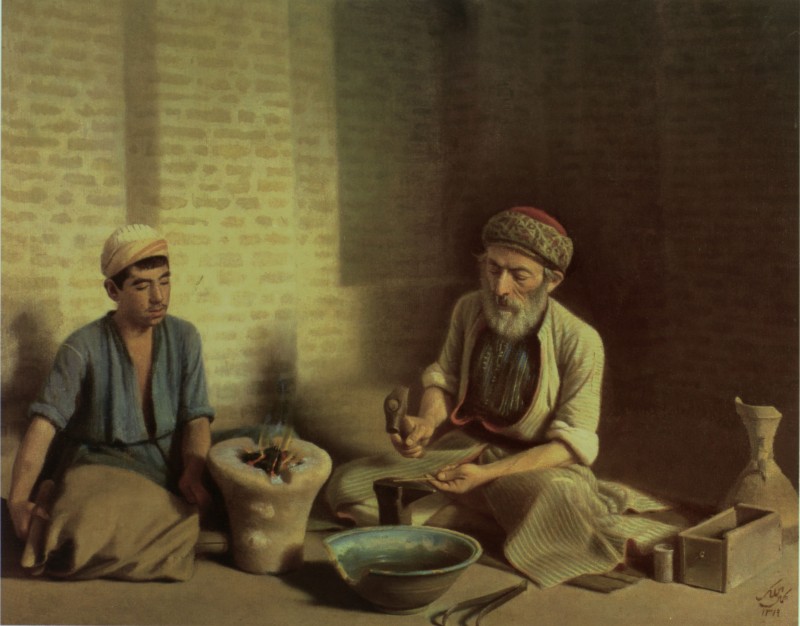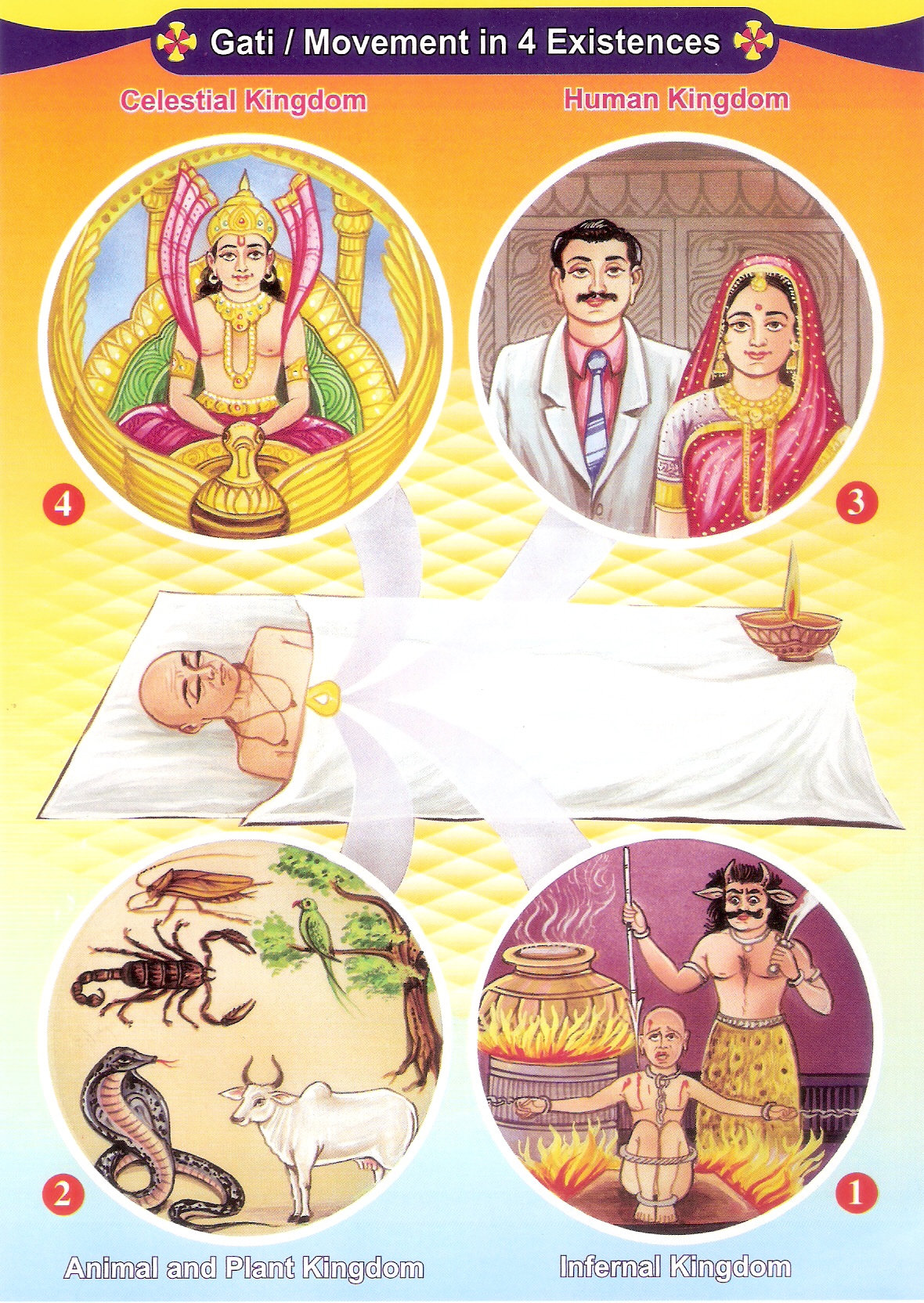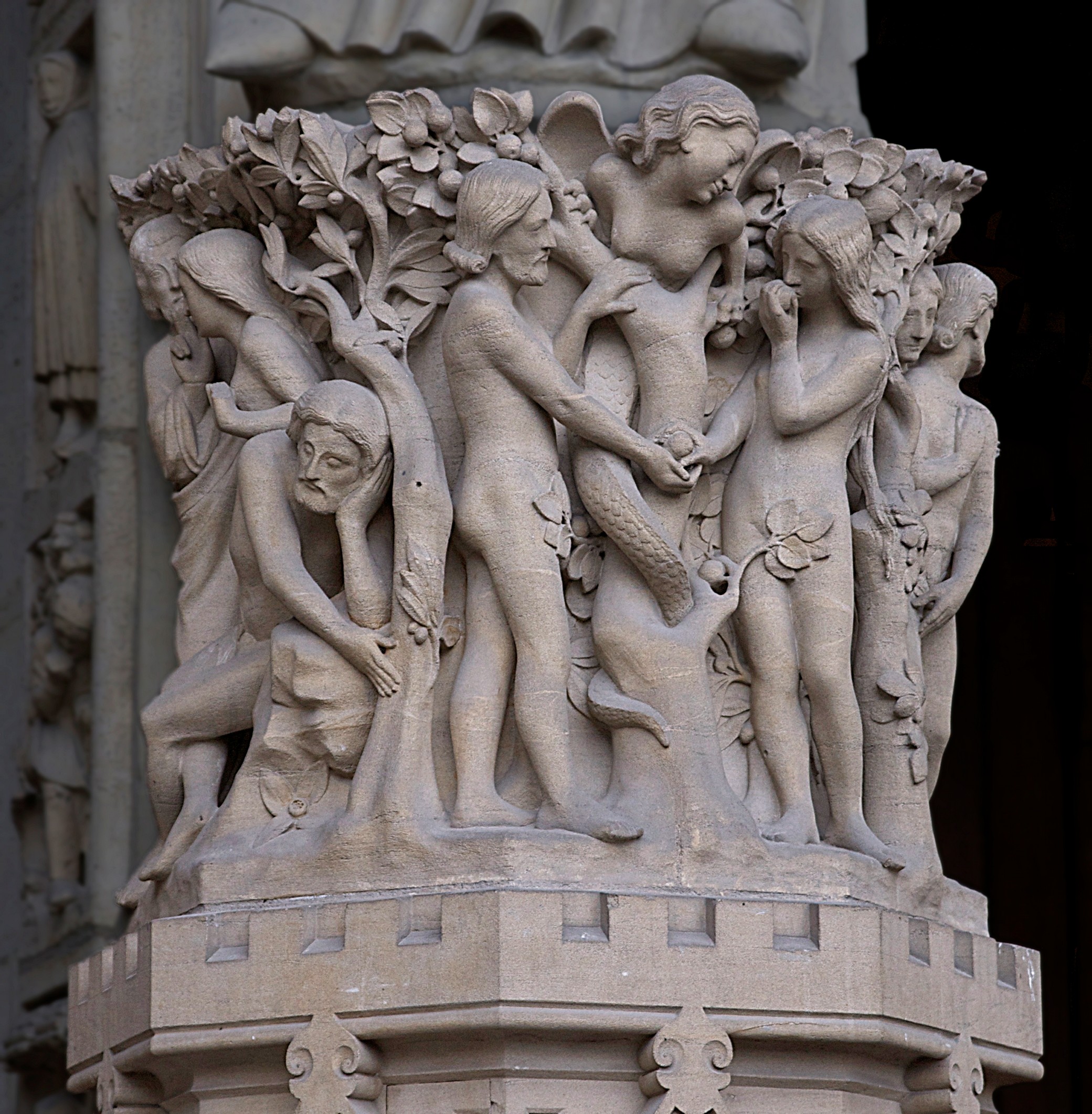|
The Juniper Tree (fairy Tale)
"The Juniper Tree" (also The Almond Tree; nds, Von dem Machandelboom) is a German fairy tale published in Low German by the Brothers Grimm in '' Grimm's Fairy Tales'' in 1812 (KHM 47). The story contains themes of child abuse, murder, cannibalism and biblical symbolism and is one of the Brothers Grimm's darker and more mature fairy tales. The tale is of Aarne–Thompson type 720 ("The Juniper Tree"). Another such tale is the English '' The Rose-Tree'', although it reverses the sexes from ''The Juniper Tree''; ''The Juniper Tree'' follows the more common pattern of having the dead child be a boy. Origin The tale was published by the Brothers Grimm in the first edition of ''Kinder- und Hausmärchen'' in 1812. A somewhat different version appeared a few months earlier Johann Gustav Büsching's ''Volks-Sagen, Märchen und Legenden'' (1812). It was believed until the early 1870s that the Brothers Grimm re-adapted various oral recountings and fables heard from local peasants an ... [...More Info...] [...Related Items...] OR: [Wikipedia] [Google] [Baidu] |
Germany
Germany, officially the Federal Republic of Germany (FRG),, is a country in Central Europe. It is the most populous member state of the European Union. Germany lies between the Baltic and North Sea to the north and the Alps to the south. Its 16 constituent states have a total population of over 84 million in an area of . It borders Denmark to the north, Poland and Czechia to the east, Austria and Switzerland to the south, and France, Luxembourg, Belgium, and the Netherlands to the west. The nation's capital and most populous city is Berlin and its main financial centre is Frankfurt; the largest urban area is the Ruhr. Settlement in what is now Germany began in the Lower Paleolithic, with various tribes inhabiting it from the Neolithic onward, chiefly the Celts. Various Germanic tribes have inhabited the northern parts of modern Germany since classical antiquity. A region named Germania was documented before AD 100. In 962, the Kingdom of Germany formed the ... [...More Info...] [...Related Items...] OR: [Wikipedia] [Google] [Baidu] |
Goldsmith
A goldsmith is a metalworker who specializes in working with gold and other precious metals. Nowadays they mainly specialize in jewelry-making but historically, goldsmiths have also made silverware, platters, goblets, decorative and serviceable utensils, and ceremonial or religious items. Goldsmiths must be skilled in forming metal through filing, soldering, sawing, forging, casting, and polishing. The trade has very often included jewelry-making skills, as well as the very similar skills of the silversmith. Traditionally, these skills had been passed along through apprenticeships; more recently jewelry arts schools, specializing in teaching goldsmithing and a multitude of skills falling under the jewelry arts umbrella, are available. Many universities and junior colleges also offer goldsmithing, silversmithing, and metal arts fabrication as a part of their fine arts curriculum. Gold Compared to other metals, gold is malleable, ductile, rare, and it is the only ... [...More Info...] [...Related Items...] OR: [Wikipedia] [Google] [Baidu] |
Reincarnation
Reincarnation, also known as rebirth or transmigration, is the philosophical or religious concept that the non-physical essence of a living being begins a new life in a different physical form or body after biological death. Resurrection is a similar process hypothesized by some religions, in which a soul comes back to life in the same body. In most beliefs involving reincarnation, the soul is seen as immortal and the only thing that becomes perishable is the body. Upon death, the soul becomes transmigrated into a new infant (or animal) to live again. The term transmigration means passing of soul from one body to another after death. Reincarnation (''Punarjanma'') is a central tenet of the Indian religions such as Buddhism, Hinduism, Jainism, and Sikhism; as well as certain Paganist religious groups, although there are Hindu and Buddhist groups who do not believe in reincarnation, instead believing in an afterlife. In various forms, it occurs as an esoteric belief in man ... [...More Info...] [...Related Items...] OR: [Wikipedia] [Google] [Baidu] |
Eucharist
The Eucharist (; from Greek , , ), also known as Holy Communion and the Lord's Supper, is a Christian rite that is considered a sacrament in most churches, and as an ordinance in others. According to the New Testament, the rite was instituted by Jesus Christ during the Last Supper; giving his disciples bread and wine during a Passover meal, he commanded them to "do this in memory of me" while referring to the bread as "my body" and the cup of wine as "the blood of my covenant, which is poured out for many". The elements of the Eucharist, sacramental bread ( leavened or unleavened) and wine (or non-alcoholic grape juice), are consecrated on an altar or a communion table and consumed thereafter, usually on Sundays. Communicants, those who consume the elements, may speak of "receiving the Eucharist" as well as "celebrating the Eucharist". Christians generally recognize a special presence of Christ in this rite, though they differ about exactly how, where, and when Chri ... [...More Info...] [...Related Items...] OR: [Wikipedia] [Google] [Baidu] |
Dove
Columbidae () is a bird family consisting of doves and pigeons. It is the only family in the order Columbiformes. These are stout-bodied birds with short necks and short slender bills that in some species feature fleshy ceres. They primarily feed on seeds, fruits, and plants. The family occurs worldwide, but the greatest variety is in the Indomalayan and Australasian realms. The family contains 344 species divided into 50 genera. Thirteen of the species are extinct. In English, the smaller species tend to be called "doves" and the larger ones "pigeons". However, the distinction is not consistent, and does not exist in most other languages. Historically, the common names for these birds involve a great deal of variation between the terms. The bird most commonly referred to as just "pigeon" is the domestic pigeon, which is common in many cities as the feral pigeon. Doves and pigeons build relatively flimsy nests, often using sticks and other debris, which may be placed ... [...More Info...] [...Related Items...] OR: [Wikipedia] [Google] [Baidu] |
Holy Spirit
In Judaism, the Holy Spirit is the divine force, quality, and influence of God over the Universe or over his creatures. In Nicene Christianity, the Holy Spirit or Holy Ghost is the third person of the Trinity. In Islam, the Holy Spirit acts as an agent of divine action or communication. In the Baha’i Faith, the Holy Spirit is seen as the intermediary between God and man and "the outpouring grace of God and the effulgent rays that emanate from His Manifestation". Comparative religion The Hebrew Bible contains the term " spirit of God" (''ruach hakodesh'') which by Jews is interpreted in the sense of the might of a unitary God. This interpretation is different from the Christian conception of the Holy Spirit as one person of the Trinity. The Christian concept tends to emphasize the moral aspect of the Holy Spirit more than Judaism, evident in the epithet Spirit that appeared in Jewish religious writings only relatively late but was a common expression in the Christi ... [...More Info...] [...Related Items...] OR: [Wikipedia] [Google] [Baidu] |
Demonic Possession
Spirit possession is an unusual or altered state of consciousness and associated behaviors purportedly caused by the control of a human body by spirits, ghosts, demons, or gods. The concept of spirit possession exists in many cultures and religions, including Buddhism, Christianity,Mark 5:9, Luke 8:30 Haitian Vodou, Hinduism, Islam, Wicca, and Southeast Asian, African, and Native American traditions. Depending on the cultural context in which it is found, possession may be considered voluntary or involuntary and may be considered to have beneficial or detrimental effects on the host. In a 1969 study funded by the National Institute of Mental Health, spirit possession beliefs were found to exist in 74% of a sample of 488 societies in all parts of the world, with the highest numbers of believing societies in Pacific cultures and the lowest incidence among Native Americans of both North and South America. As Pentecostal and Charismatic Christian churches move into both A ... [...More Info...] [...Related Items...] OR: [Wikipedia] [Google] [Baidu] |
Damnation
Damnation (from Latin '' damnatio'') is the concept of divine punishment and torment in an afterlife for actions that were committed, or in some cases, not committed on Earth. In Ancient Egyptian religious tradition, citizens would recite the 42 negative confessions of Maat as their heart was weighed against the feather of truth. If the citizen's heart was heavier than a feather they would be devoured by Ammit. Zoroastrianism developed an eschatological concept of a Last Judgment called Frashokereti where the dead will be raised and the righteous wade through a river of milk while the wicked will be burned in a river of molten metal. Abrahamic religions such as Christianity have similar concepts of believers facing judgement on a last day to determine if they will spend eternity in Gehenna or heaven for their sin . A damned human "in damnation" is said to be either in Hell, or living in a state wherein they are divorced from Heaven and/or in a state of disgrace from God' ... [...More Info...] [...Related Items...] OR: [Wikipedia] [Google] [Baidu] |
Fall Of Man
The fall of man, the fall of Adam, or simply the Fall, is a term used in Christianity to describe the transition of the first man and woman from a state of innocent obedience to God to a state of guilty disobedience. * * * * The doctrine of the Fall comes from a biblical interpretation of Genesis, chapters 1–3. At first, Adam and Eve lived with God in the Garden of Eden, but the serpent tempted them into eating the fruit from the tree of knowledge of good and evil, which God had forbidden. After doing so, they became ashamed of their nakedness and God expelled them from the Garden to prevent them from eating from the tree of life and becoming immortal. In mainstream (Nicene) Christianity, the doctrine of the Fall is closely related to that of original sin or ancestral sin. They believe that the Fall brought sin into the world, corrupting the entire natural world, including human nature, causing all humans to be born into original sin, a state from which they cannot atta ... [...More Info...] [...Related Items...] OR: [Wikipedia] [Google] [Baidu] |
Rapunzel
"Rapunzel" ( , ) is a German fairy tale recorded by the Brothers Grimm and first published in 1812 as part of ''Children's and Household Tales'' (KHM 12). The Brothers Grimm's story developed from the French literary fairy tale of ''Persinette'' by Charlotte-Rose de Caumont de La Force (1698). The tale is classified as Aarne–Thompson type 310 ("The Maiden in The Tower"). Its plot has been used and parodied in various media. Its best known line is, "Rapunzel, Rapunzel, let down your hair". Plot A lonely couple, who long for a child, live next to a large, extensive, high-walled subsistence garden, belonging to a sorceress.), despite the common modern impression. The wife, experiencing pregnancy cravings, longs for the ''rapunzel'' that she sees growing in the garden (''rapunzel'' is either the salad green and root vegetable ''Campanula rapunculus'', or the salad green ''Valerianella locusta''). She refuses to eat anything else and begins to waste away. Her husband fears ... [...More Info...] [...Related Items...] OR: [Wikipedia] [Google] [Baidu] |
The Frog Prince
"The Frog Prince; or, Iron Henry" (german: Der Froschkönig oder der eiserne Heinrich, literally "The Frog King or the Iron Henry") is a German fairy tale collected by the Brothers Grimm and published in 1812 in ''Grimm's Fairy Tales'' (KHM 1). Traditionally, it is the first story in their folktale collection. The tale is classified as Aarne-Thompson type 440. Origin Editions The story is best known through the rendition of the Brothers Grimms, who published it in their 1812 edition of '' Kinder- und Hausmärchen'' (''Grimm's Fairy Tales''), as tale no. 1. An older, moralistic version was included in the Grimms' handwritten Ölenberg Manuscript from 1810. Jack Zipes noted in 2016 that the Grimms greatly treasured this tale, considering it to be one of the "oldest and most beautiful in German-speaking regions." Sources The Grimms' source is unclear, but it apparently comes from an oral tradition of Dortchen Wild's family in Kassel. The volume 2 of the first edition of ''K ... [...More Info...] [...Related Items...] OR: [Wikipedia] [Google] [Baidu] |
Snow White
"Snow White and the Seven Dwarfs" is a 19th-century German fairy tale that is today known widely across the Western world. The Brothers Grimm published it in 1812 in the first edition of their collection ''Grimms' Fairy Tales'' and numbered as Tale 53. The original German title was ''Sneewittchen'', a Low German form, but the first version gave the High German translation ''Schneeweißchen'', and the tale has become known in German by the mixed form ''Schneewittchen''. The Grimms completed their final revision of the story in 1854, which can be found in the in 1957 version of ''Grimms' Fairy Tales''. The fairy tale features such elements as the magic mirror, the poisoned apple, the glass coffin, and the characters of the Evil Queen and the seven Dwarfs. The seven dwarfs were first given individual names in the 1912 Broadway play '' Snow White and the Seven Dwarfs'' and then given different names in Walt Disney's 1937 film '' Snow White and the Seven Dwarfs''. The Grimm stor ... [...More Info...] [...Related Items...] OR: [Wikipedia] [Google] [Baidu] |
_plate_facing_p186.png)





_-_WGA00472.jpg)



